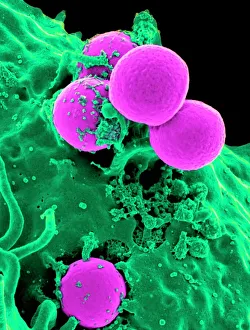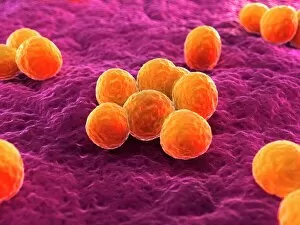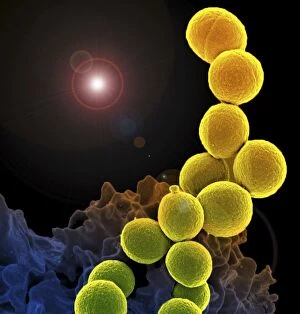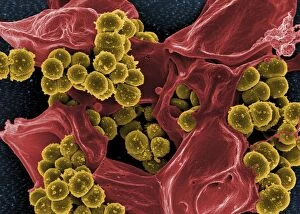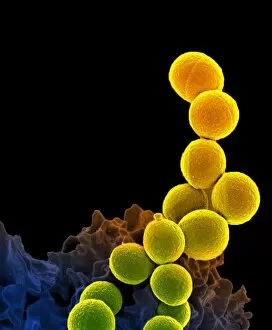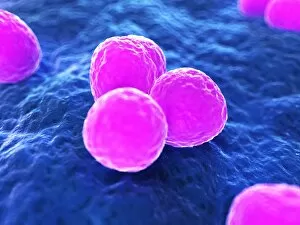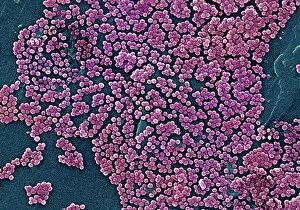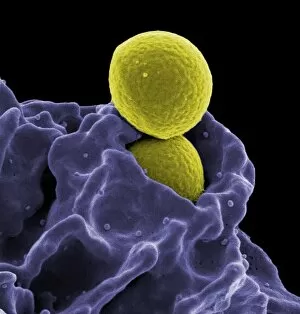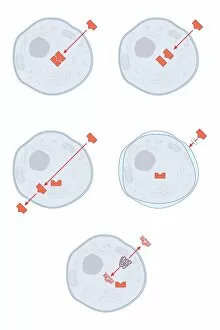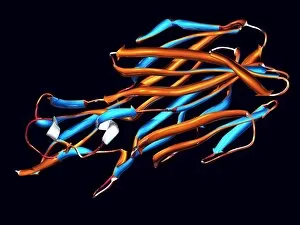Mrsa Collection
MRSA, short for Methicillin-resistant Staphylococcus aureus, is a type of bacteria that has developed resistance to commonly used antibiotics
All Professionally Made to Order for Quick Shipping
MRSA, short for Methicillin-resistant Staphylococcus aureus, is a type of bacteria that has developed resistance to commonly used antibiotics. This microscopic view showcases the MRSA bacteria, with its distinct shape and structure. The artwork beautifully captures the intricate details of this resilient pathogen. In another image, we witness a neutrophil engulfing MRSA, highlighting the body's immune response against this dangerous bacterium. Neutrophils are white blood cells responsible for fighting off infections, but even they struggle to combat MRSA due to its resistant nature. A colorized scanning electron micrograph reveals a white blood cell devouring MRSA in an attempt to eliminate it from the body. Despite their valiant efforts, these immune cells often face challenges when dealing with this stubborn superbug. The SEM image further emphasizes the battle between Staphylococcus and human neutrophils. It shows how some neutrophils succumb to infection while trying to eradicate MRSA from our system. These visuals provide us with valuable insights into the world of staphylococcus and its formidable variant - Methicillin-resistant Staphylococcus aureus. They remind us of the ongoing fight against antibiotic resistance and highlight the need for innovative solutions in combating such deadly pathogens like MRSA.

